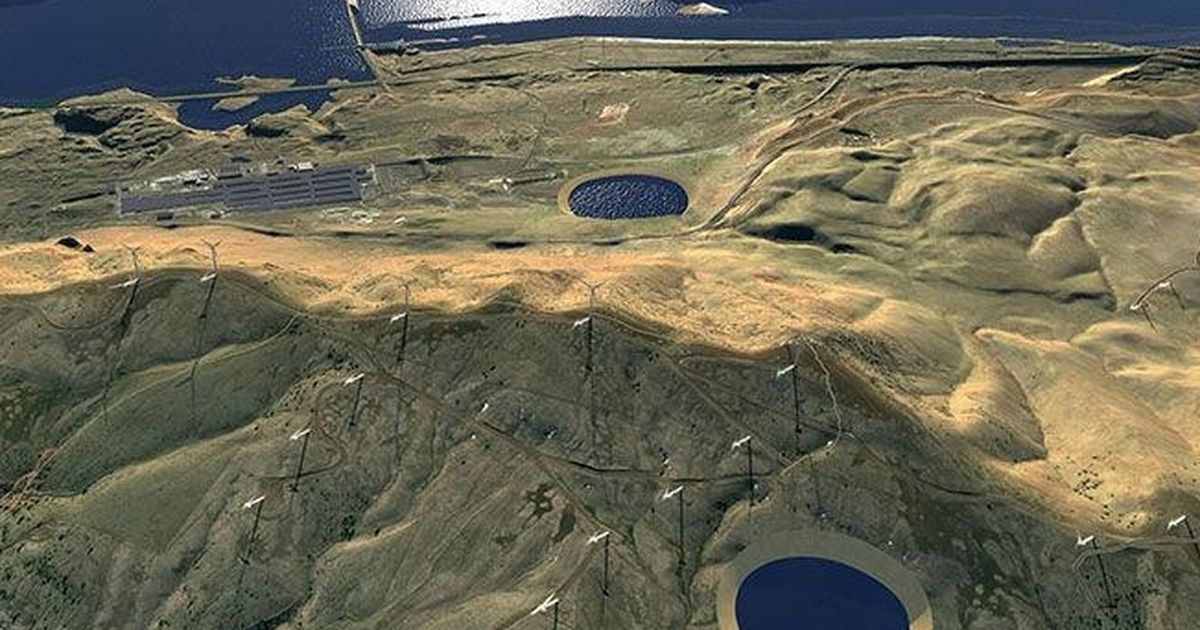Proposed pumped-storage energy project on sacred Yakama Nation site gets key permit

A proposed hydropower facility near the Columbia River that would have unavoidable impacts on a culturally significant site for the Yakama Nation cleared one key regulatory hurdle this week.
On Monday, the Washington state Department of Ecology issued a water quality certification for Boston-based Rye Development. The developer will need to obtain more than a dozen other permits to begin construction on the project, but two federal permits directly depend on securing this certification.
Rye plans to construct a pumped-storage facility that would complement transitions to renewable energy sources like wind and solar. Called the Goldendale Energy Storage Project, it could be the largest facility of its kind in the Pacific Northwest.
This year, a draft environmental impact statement from the Federal Energy Regulatory Commission said the project would desecrate Pushpum, an important food gathering area and sacred site for the Yakama Nation. The document reached the same conclusion as an earlier study by the state of Washington.
Each spring, Yakama Nation families head to the south-facing slope of Pushpum, dotted with juniper bushes, grasses and shrubs, to gather Indian celery, one of the first food plants of the season. While the proposed project site is just south of the Yakama Reservation, it is part of the confederated tribes’ vast ancestral homelands.
The whole area is known to the Yakamas as “the mother of all roots,” or a natural seed bank, Elaine Harvey, environmental coordinator with Yakama Nation Fisheries and a member of the Kamiltpah Band, said in December. It also holds archaeological and ceremonial sites.
It has in the past been impacted by industry, including the former Columbia Gorge aluminum smelter.
“We’ve seen the historic impacts of the hydro systems, that removed our people from the Columbia River but also the decline in salmon populations Councilmember Jeremy Takala said Monday in an interview. “This type of project is impacting our traditional cultural property — our church is our land.”
This year, the Affiliated Tribes of Northwest Indians and the National Congress of American Indians passed emergency resolutions in support of protecting Indigenous sovereignty and treaty-reserved rights at Pushpum.
This week’s decision from the state felt like a blow to Columbia Basin tribes who have opposed the project since its inception and were joined by other tribes across the state to call on Gov. Jay Inslee to halt its development.
A spokesperson for the governor’s office said the governor “is confident in the Department of Ecology’s process for reviewing and issuing such permits. I’d defer to them on any further comment.”
Emily Tasaka, spokesperson for the state Department of Ecology, said the state’s environmental impact statement on the site was developed with the intent of informing the agencies making permitting decisions on the project.
The water quality certification strictly looked at the project’s potential impact to water quality, not cultural resources. There may be other opportunities for the state or federal agencies to deny permits.
“Today, we are one step closer to creating a more sustainable energy future for the Pacific Northwest,” said a written statement from Rye Development. “This is a key permit, and Rye looks forward to continuing to work with state and federal officials to make pumped storage hydropower a reality in Southern Washington.”
Washington state needs to build out clean energy, and fast. The state’s Clean Energy Transformation Act called for the end of fossil-fueled power generation by 2045.
The Northwest Power and Conservation Council has recommended power providers in the Pacific Northwest acquire at least 3,500 megawatts of renewable energy resources by 2027 to ensure grid reliability and reduce emissions.
Output from wind and solar varies hour by hour and minute by minute. This creates big challenges for utility managers, who must ensure demand and supply are constantly in balance. Otherwise, they risk blackouts. So more energy storage — like the proposed Goldendale project — could make power generation more consistent.
The 680-acre project site includes plans for two 60-acre reservoirs connected by an underground concrete or steel tunnel equipped with turbines. It would draw water from a pool off the Columbia River.
The facility uses electricity to pump water up to the higher reservoir. When there’s high demand on the power grid, that water is released back down the over-2,000-foot slope to create additional power, like a giant water battery. The design is considered by some to be a more sustainable alternative to other energy storage projects that rely on lithium batteries.
The Goldendale facility could generate 1,200 megawatts of clean energy, and could discharge at its power capacity for 12 to 20 hours before depleting. It would take about 16 hours to refill the upper reservoir.
“Pumped storage is a critical tool in facilitating our transition to clean energy — however, the current siting of this project reinforces the exploitation of our tribal neighbors and should have been rejected,” Sept Gernez, acting director of the Washington State Sierra Club, said in a statement. “In order to ensure a truly just transition to clean energy and a healthy climate for all, we must transform our social systems and structures from an exploitative economy to a regenerative society built on sustainability and respect for the original stewards of this land.”
Nearly $40 million of the state’s new revenue from carbon auctions will support large-scale solar energy projects through grants, with about half dedicated to a solar project by the Yakama Nation.
Ecology previously denied Rye’s certification application in June 2021.
Ecology is required to evaluate a project related to state water if it would affect public health, water usage and wildlife habitat.
Ecology’s decision can be appealed within 30 days.
